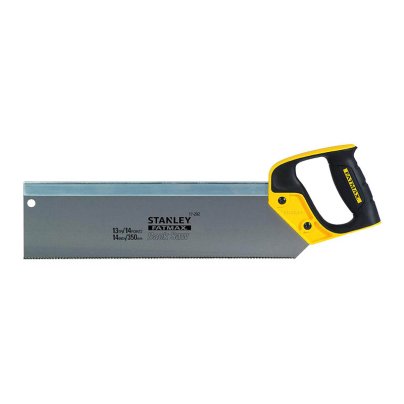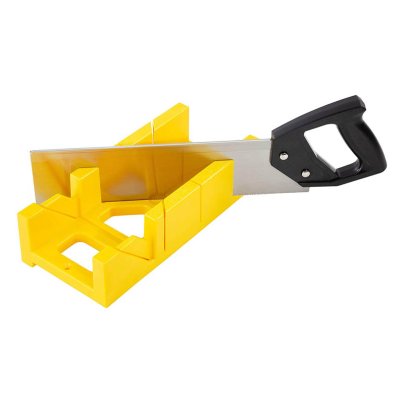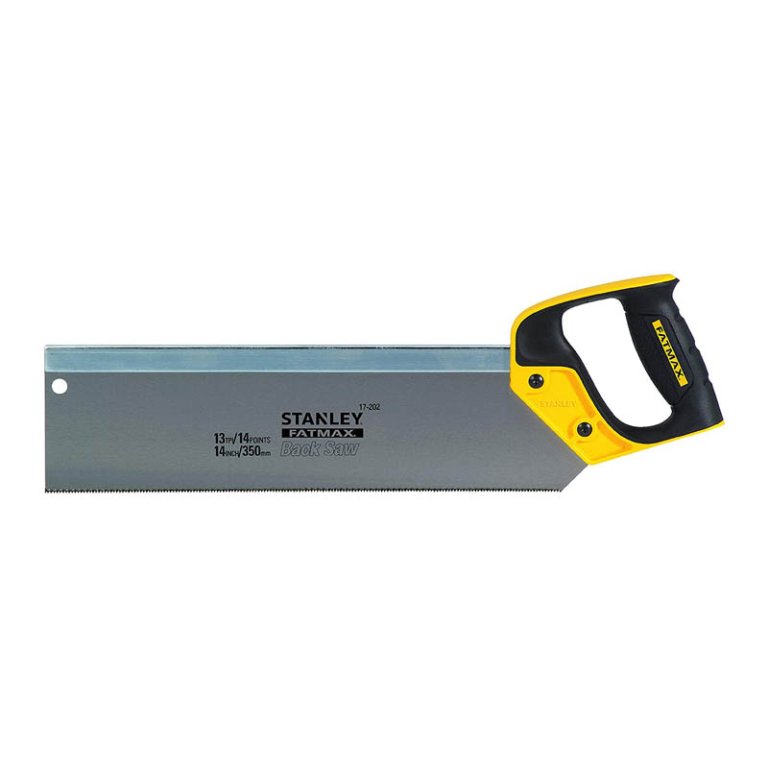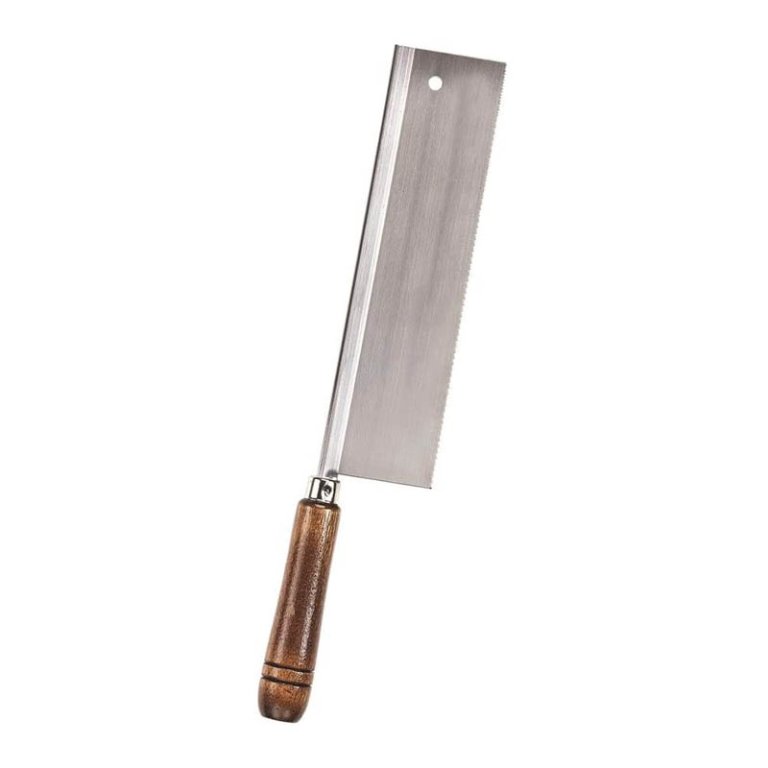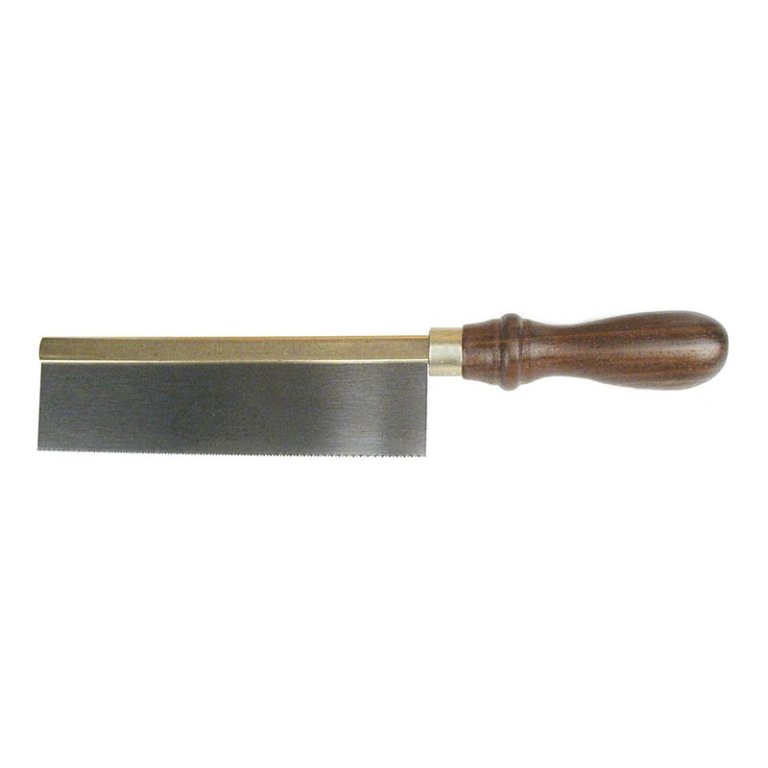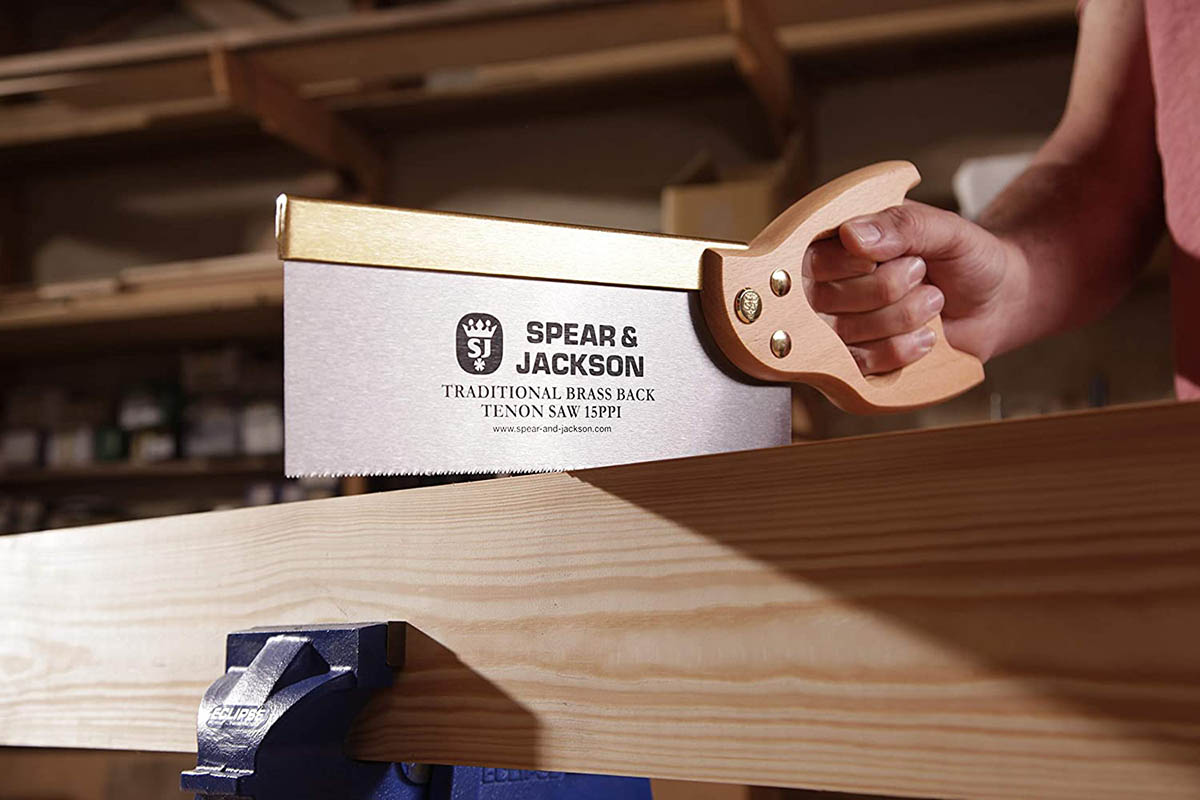
We may earn revenue from the products available on this page and participate in affiliate programs. Learn More ›
Although a back saw may not be considered an essential woodworking tool, it should by no means be viewed as a luxury item. The fact that this tool has changed so little in hundreds of years is a testament to its efficiency at jobs like sawing across the grain or for precision tasks like cutting dovetails. There’s also a certain unquantifiable element to owning a high-quality back saw. For those who enjoy their craft, a back saw can be a joy to use, giving enthusiasts who appreciate the hands-on approach an opportunity to hone their skills.
By their nature, back saws are also among the safest wood-cutting tools. The small size of dovetail and gent’s saws in particular makes them a great way to introduce children to woodworking (with parental supervision, of course).
This guide explains the different variations of these tools and will help the keen woodworker select the best back saw for their needs. Read on to learn about the important factors to consider when choosing a back saw, and then discover some of the top-rated options on the market today.
- BEST OVERALL: Stanley – Fatmax Tenon/Back Saw
- BEST BANG FOR THE BUCK: GreatNeck BSB14 12 Inch Mitre Box w/ 14 Inch Back Saw
- BEST DOVETAIL SAW: Zona 35-380 Thick Dovetail Saw
- BEST GENT’S SAW: Crown 187 8-Inch 203-mm Gents Saw
- BEST TENON SAW: Spear & Jackson 9550B Traditional Brass Back Tenon
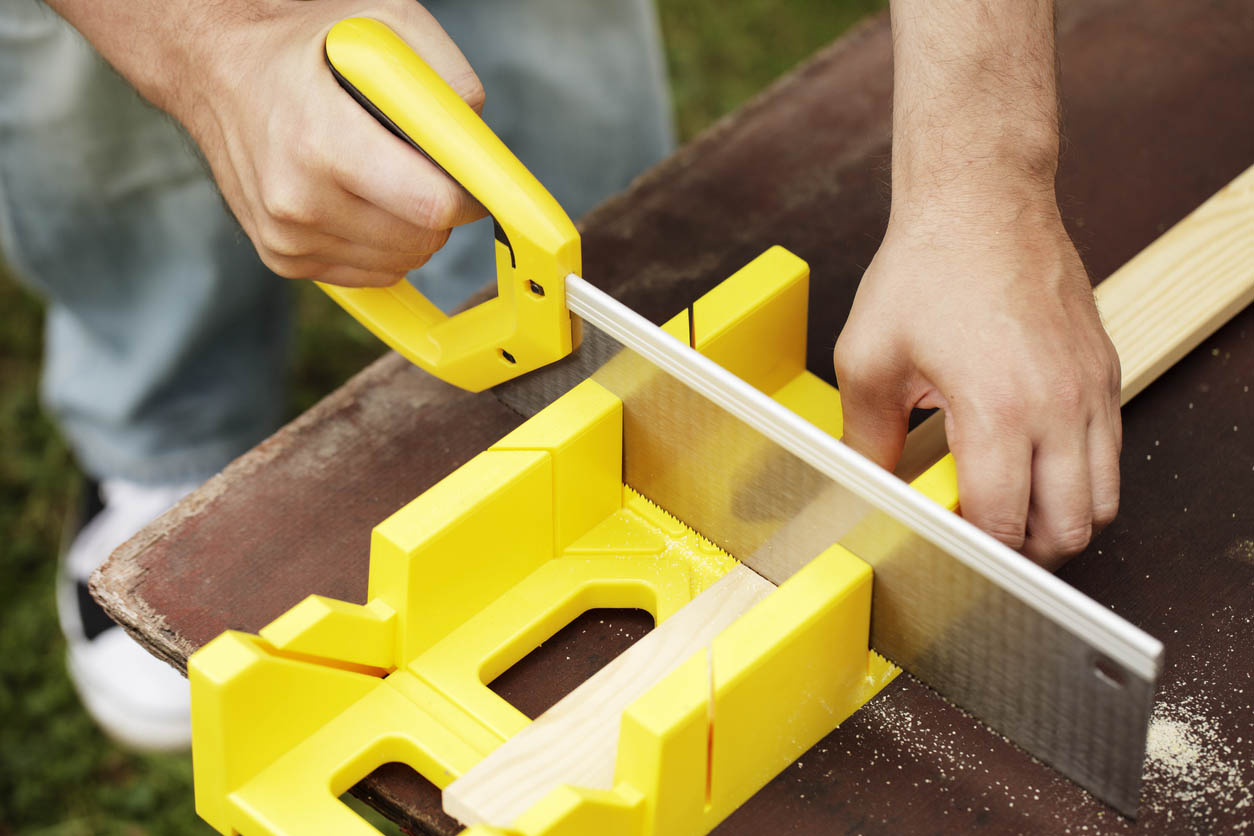
What to Consider When Choosing the Best Back Saw
The term “back saw” is an umbrella term for any saw with a reinforced brass or steel back edge. This design is to prevent blade flex and therefore aids in consistent, accurate cutting. The following section looks at technical differences among these tools and should help refine your search for the best back saw for a particular task.
Type
Although any saw with a strengthened spine can be called a back saw, these tools are divided into different types.
The tenon saw is the largest of these tools, although it is often simply referred to as a back saw in the U.S. It is a general-purpose saw named for cutting the tenon of a mortise and tenon joint and also for sawing across the grain and cutting miters. In fact, manufacturers often sell a tenon saw with a miter box. This tool is usually found on the job site, as well as in a workshop.
A dovetail saw is somewhat smaller. As the name suggests, it is commonly used to cut dovetail joints, though many dovetail saws are still large enough to provide good versatility. The gentleman’s saw (usually just called a gent’s saw) is a smaller, more refined tool for detailed shop work.
Teeth
A back saw usually has a crosscut tooth pattern rather than the rip tooth pattern on larger general purpose carpentry saws. The teeth point straight up instead of being angled in the direction of the cut, making for cleaner cuts across or at an angle to the grain. Teeth may simply be stamped out of the blade material, though they are often induction hardened using an electrical current to retain their sharpness longer.
The number of teeth per inch (tpi) determines the smoothness of the cut, but it also affects the speed at which the saw cuts. Fewer and larger teeth are faster than more and smaller teeth. A general-purpose back saw might have 12 or 13 tpi, whereas, at the other end of the scale, a gent’s saw could have 18 to 20 tpi.
Blade Size and Material
As might be expected, a general-purpose back saw is a much larger tool than a gent’s saw. The blade on a tenon saw can be up to 18 inches in length, though 12 to 14 inches is more common. A dovetail saw will typically be 8 to 10 inches, and a gent’s saw is usually 6 to 8 inches long.
Blades also tend to be proportionally shallower as they grow shorter. For example, a tenon saw appears quite stocky, but a gent’s saw looks rather delicate. This is because the former may have to withstand considerable force while sawing, so it needs plenty of material in the blade. In contrast, the latter is only for fine work, so the support offered by the reinforced back is sufficient.
The depth of the blade is also a factor when choosing the best back saw for your needs. Keep in mind that the depth is, in effect, the maximum depth of cut because the back will prevent you from sawing any deeper.
Blades are invariably made of steel. Quality varies, but accurate information about type is not always available. In general, high carbon steel blades are of higher quality, which is often reflected in the price. The reinforcing strip along the back is traditionally brass, though steel is also used in the construction. While the latter may be less visually attractive, it is stronger.
Handle
A back saw can feature one of two types of handles. Tenon saws tend to use the standard pistol grip, which provides a secure hold when sawing larger sections of material. Some are flat; others are contoured to maximize the grip. Dovetail and gent’s saws generally have an inline handle and don’t require a lot of physical power behind them to operate.
Handle materials vary considerably. Wood is the traditional and preferred choice on dovetail and gent’s saws. Low-cost tenon saws often have plain plastic handles, which can best be described as functional. More high-quality tools boast composite handles, which offer both durability and comfort.
Our Top Picks
Now that you’ve read about the sizes and specifications associated with these tools, it’s time to focus on several high-quality models currently on the market in specific categories. Read on to discover some of the best back saws to add precision to your next woodworking project.
Best Overall
Stanley – Fatmax Tenon/Back Saw
The Stanley Fatmax is a 14-inch general-purpose back saw designed to cut wood, plywood, and composites efficiently. It has 13 tpi, which provides a good compromise between rapid cutting and a clean finish. This is a popular tool with tradespeople while equally useful for DIY or in the home workshop.
The blade is made of steel, and the back is also steel, adding support and durability. The tough bi-material handle is nicely sculpted for a firm hold and all-day comfort.
While the Stanley Fatmax back saw is technically a disposable tool due to the induction hardened teeth that can’t be sharpened, it should still offer an excellent service life.
Best Bang for the Buck
GreatNeck BSB14 12 Inch Mitre Box w/ 14 Inch Back Saw
One of the most common uses for a back saw is to cut joints in lumber at accurate 45- or 90-degree angles. To make this a quick and easy task, manufacturers often pair the back saw with a miter box. The back saw is fitted into pre-made slots, so the job only takes minutes. Of course, users can also operate the back saw without the miter box, so there’s no limit on versatility.
The GreatNeck reinforced steel back saw features a 14-inch blade with 12 tpi designed for fast cutting. A high-impact plastic handle offers good durability and a comfortable grip. The miter box is made from tough, high-impact polystyrene and allows for a maximum of 3-inch depth.
While this is not a tool for the fastidious cabinetmaker, it does offer excellent value for those who perhaps want to make rustic furniture and is invaluable for DIY or remodeling jobs.
Best Dovetail Saw
Zona 35-380 Thick Dovetail Saw
Making high-quality dovetail joints requires care and precision. Thus, a high-quality dovetail saw needs to provide excellent control while still easily cutting through tough hardwoods. The Zona dovetail saw answers to these demands at a price considerably lower than many competitors.
The 8-inch blade features a steel back and offers 18 tpi. The manufacturer calls it a “thick” blade, which may be true compared to some other blades, yet the kerf is only 0.020-inch thick. Zona also uses the term “razor blade” to indicate its rapid cutting capability, and there’s sufficient strength in the blade to apply firm pressure when necessary.
The saw has a wooden handle, which is pleasant to hold but not exceptional in terms of grip or comfort. Overall, this is a very affordable dovetail saw for the craft and hobby user.
Best Gent’s Saw
Crown 187 8-Inch 203-mm Gents Saw
Premium materials are featured in the construction of this Crown gent’s saw. The 8-inch, 17tpi blade is made from high-carbon steel, which is hard and holds an edge well but can be resharpened when necessary. The back is traditional solid brass, as is the ferrule where the blade fits into the handle. The classic rosewood handle has been sculpted for a comfortable grip that also allows excellent control.
The Crown gent’s saw follows a design that has been unchanged for generations because it’s highly effective. While there are cheaper gent’s saws on the market, few offer comparable performance.
Best Tenon Saw
Spear & Jackson 9550B Traditional Brass Back Tenon
Spear & Jackson has been making fine woodworking tools for almost 200 years, so when they refer to a tenon saw as “traditional,” they have the experience to support the claim. That said, aspects like the high-carbon steel blade demonstrate that this manufacturer has also incorporated the best of modern metals technology into the construction of this back saw.
The blade is 12 inches long and has 15 tpi. The deep brass back offers excellent support. While this is a compact saw, it is capable of providing rapid cutting when required. The “universal” tooth shape is equally at home cutting along the grain or across, enabling accurate sawing no matter the task. The comfortable wooden handle is securely fixed with three rivets rather than the usual two. The Spear & Jackson tenon saw is something of an investment, but it’s a fine tool that should last a lifetime.
FAQs About Back Saws
Having read through our considerations and taken a close look at some of the top-rated options, you’re now in a much better position to choose the best back saw for your needs. That said, you may have questions that are as yet unanswered. The following section covers many of the most frequently asked queries.
Q. Can a back saw cut metal?
In general, a back saw is a woodworking tool, though you could occasionally use it to cut soft metals like aluminum, brass, and copper. If you need to cut metal regularly, especially steel, you should buy a hacksaw.
Q. Do I need to sharpen my back saw?
If you frequently use a backsaw, it is likely to need sharpening eventually. Fortunately, doing so is not difficult. For practical help, you can refer to the article here. Back saws with induction hardened teeth cannot be sharpened as they’re too hard. However, they do last much longer than blades with stamped teeth.
Q. How do I maintain my back saw?
Keeping your back saw in peak condition is relatively easy. Giving the blade an occasional wipe with paste wax will help prevent rust. You could use light machine oil, but it might transfer to your workpiece. If practical, give the back saw its own storage area so the teeth don’t bang against other tools. If the saw has a wooden handle, as many do, keep it as dry as possible and occasionally wax it.
Q. How long will my back saw last?
A back saw should last at least several years, even with heavy use. Some of the best dovetail and gent’s saws can be considered “heirloom” tools. With a bit of care, they can last a lifetime.
